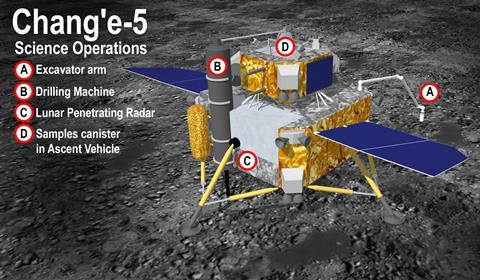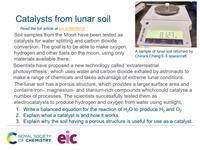Scientists have found catalysts in lunar rocks that could see us making fuel in space
Soil samples gathered by China’s Chang’e-5 spacecraft in late 2020 have been tested as catalysts for water splitting and carbon dioxide conversion. The goal is to be able to make oxygen, hydrogen and other fuels on the Moon, using only materials available on the lunar surface. That would reduce the need to transport chemicals from Earth, which is expensive and difficult.

Scientists have proposed a new technology called extraterrestrial photosynthesis. The approach tries to maximise the use of lunar resources, including extreme temperatures and intensive sunlight. The method uses water and carbon dioxide exhaled by astronauts to make a range of chemicals and takes advantage of the extreme environmental conditions on the Moon, which include temperatures that range from –173°C at night to 127°C during the day.
Put this in context
Add context and highlight diverse careers with our short career videos showing how chemistry is making a difference and let your learners be inspired by chemists like James, an environmental chemist.
The team analysed the lunar samples and found that iron-, magnesium- and titanium-rich compounds present in the rocks could catalyse a number of processes. The scientists successfully tested the compounds as electrocatalysts to produce hydrogen and oxygen from water using sunlight. The lunar samples were also tested as photocatalysts for converting carbon dioxide into fuels like methane and methanol. The soil also has a porous structure, which provides a larger surface area for reactions.
Read the full story in Chemistry World.
A one-slide summary of this article with questions to use with your 14–16 students: rsc.li/3xqckAH
Downloads
EiC starter slide Catalysts from lunar soil
Presentation | PDF, Size 0.1 mbEiC starter slide Catalysts from lunar soil
Presentation | PowerPoint, Size 86.28 kb















No comments yet